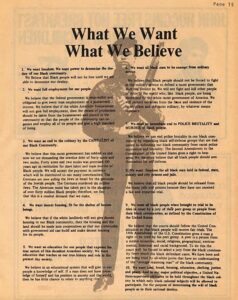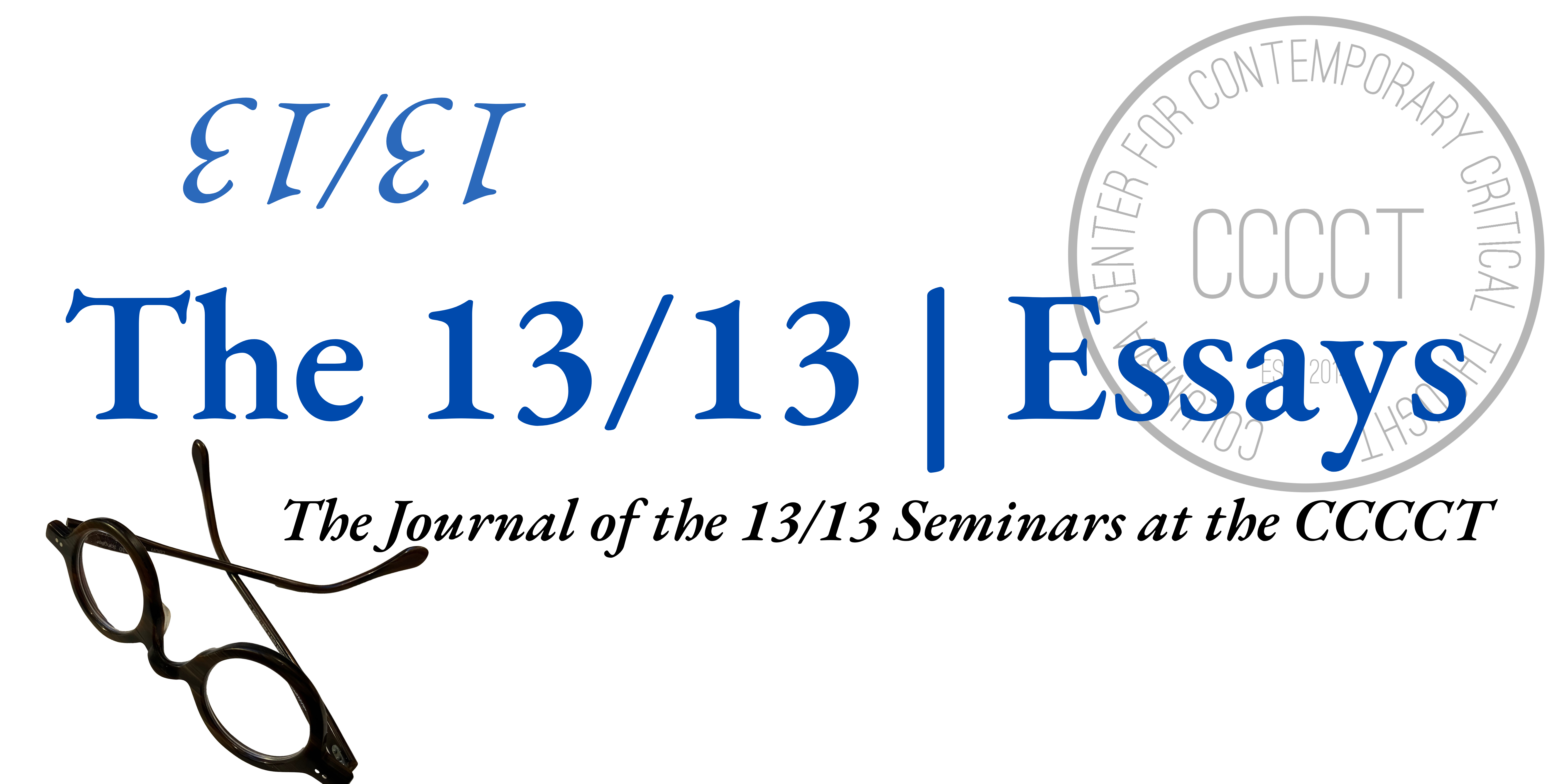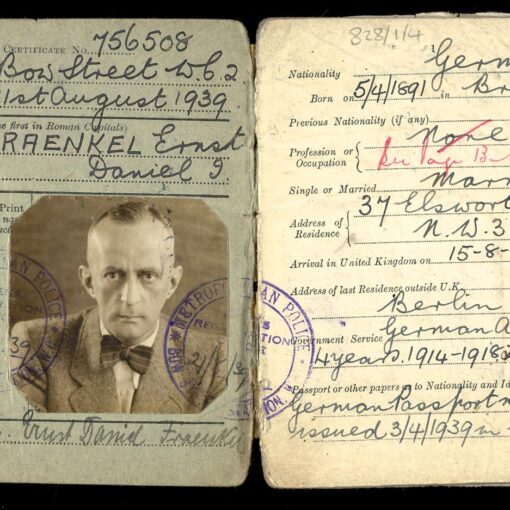
By Bernard E. Harcourt
As the ranks of the Black Panther organization rapidly swelled after its founding in 1966, community service became progressively central to its mission. In 1968 Party headquarters mandated that all chapters inaugurate “serve the people” programs. Within two years, attention to medical issues and the provision of healthcare played a considerable role in the Party’s service endeavors. By 1970 the establishment of People’s Free Medical Clinics was a chapterwide requirement. In 1972 Huey Newton and Elaine Brown revised the Party’s ten-point platform and program, adding to it an explicit demand for “completely free healthcare for all black and oppressed people.”
— Alondra Nelson, Body and Soul: The Black Panther Party and the Fight Against Medical Discrimination (2011)[1]
We must continue to fight for our youth and change and, if necessary, wage that fight for change in militant and revolutionary ways. Our young people must know that they stand on the shoulders of people like Rosa Parks, Dr. King, Malcolm X, members of the Black Panther Party, and so many others. They must know that the true motivation for anything has to begin with love and that the right strategy for success includes service and dedication.
— Jamal Joseph, Panther Baby: A Life of Rebellion and Reinvention (2012)[2]
When we tell the history of the Black Panther Party for Self-Defense, we often focus on the open carrying of guns and the armed police patrols. That was spectacular. It is what propelled the Black Panthers into the national spotlight—especially the confrontation at the California statehouse in Sacramento on May 2, 1967. But what receives less attention is that, at the very moment the Black Panther Party emerged in October 1966, it came to life with a mission focused on community service and cooperation: a ten-point platform and program focused on combatting poverty in African-American communities. The platform demanded social and economic rights, including full employment, housing, food, education, land, clothing, as well as justice and peace, and very quickly cooperative community programs were put in place for child and adult nutrition, education, health and welfare. Community service was central to the mission.[3]
Cooperation within Black communities was at the core of the Black Panther Party (BPP) project, and when we ignore this, I think we miss the most important contextual dimension to understand both the Black Panther movement and cooperation (and coöperism) more generally: the practices and institutions that the BPP were putting in place served to fill a void that was the direct product of the state’s dereliction of its duties to its citizens—magnified, in this case, by the government’s violent repression of poor Black communities.
Cooperation is what people turn to when there is no state, or when the state is actively repressing them. Every dimension of the BPP project—from the armed self-defense patrols intended to protect Black citizens from oppressive police tactics to the free health clinics, breakfast programs, and community service programs—were intended to fulfill functions of a state which was instead oppressing them.
The state’s failures—whether they are intentional or deliberately negligent—are what create the conditions of necessity for cooperation. Not just the conditions of possibility (in the critical Kantian sense), but the conditions of necessity.
As we will see as well in our next seminar on “rescue at sea,” Coöperism 11/13, it is when states are delinquent, when they are missing in action (or worse, affirmatively harming people), that people come together to fulfill the basic ethical and humanitarian duties of the absentee state. These conditions of necessity often give birth to separatist cooperative projects, like W.E.B. Du Bois’s call for an autonomous African American society made up of cooperatives, apart from white American society.[4] In fact, separatist self-determination constitutes one of the three main political-theoretic justifications and argumentative strands for cooperation, namely.[5]
Autonomy and independence can be understood as the absence of a functioning state. This was explicit in the BPP’s ten-point program: “whenever any form of government becomes destructive of these ends, it is the right of the people to alter or abolish it, and to institute a new government, laying its foundation on such principles, and organizing its powers in such form, as to them shall seem most likely to effect their safety and happiness.”[6] Those principles were cooperative self-determination.
Forms of cooperation: The ten-point program included demands for full employment, decent housing, political education, and an end to the military and carceral exploitation of Black people—in other words, “Land, Bread, Housing, Education, Clothing, Justice and Peace.”[7] There emerged several cooperative and mutual aid community-service programs, including the Free Breakfast Program for Children, the People’s Free Medical Clinics, the Busing to Prison Program, food distributions, and internal day care centers.[8] Keep in mind, of course, that the armed self-defense component was, as Flores Forbes reminds us, “the Party’s first community service program.”[9]
David Hilliard, former member and chief of staff for the Black Panther Party, has compiled and details the myriad community service programs of the Panthers, including their history, operations, and sources of funding, in a book titled The Black Panther Party: Service to the People Programs (Albuquerque: University of New Mexico Press, 2008). The cooperative programs included:
- Intercommunal Youth Institute
- Community Learning Center
- Son of Man Temple
- Seniors Against a Fearful Environment (SAFE)
- People’s Free Medical Research Health Clinics
- Sickle-Cell Anemia Research Foundation
- People’s Free Ambulance Service
- Free Breakfast for Schoolchildren Program
- Free Food Program
- Black Student Alliance
- Landbanking
- People’s Free Employment Program
- Intercommunal News Service
- People’s Cooperative Housing Program
- Child Development Center
- People’s Free Shoe Program
- People’s Free Clothing Program
- Free Plumbing and Maintenance Program
- People’s Free Pest Control Program
- Legal Aid and Educational Program
These cooperative programs provided essential services for African American communities, and they did more than that. As Suzanne Cope explains, in her book Power Hungry: Women of the Black Panther Party and Freedom Summer and Their Fight to Feed a Movement, the community programs were also prefiguring the kind of just society that the Black Panther’s hoped for: “they were modeling a worldview in addition to the direct action they were taking. To have a local group embedded in the community, feeding the hungry, giving advice, advocating for basic human rights, and teaching members the skills to do this for themselves, was creating a world in the likeness of the one they spoke about in the Political Education classes.”[10]
European governments put in place social welfare programs for their citizens when they needed them to fight their wars. In England, during World War II, the British government developed the Beveridge plan, which ultimately put in place social welfare programs for British citizens as a way to enlist support for the war and compensate the people for their sacrifices.[11] The Beveridge Report specifically presented the welfare state as a form of cooperation: the report “envisages a future of state and citizen co-operation” that would be the result of the state, citizens, and communities working together for the common good. It proposed a social fabric and network of welfare and support “from the cradle to the grave.” In the United States, the welfare state began with insurance programs for widows and children of fallen soldiers—as Theda Skocpol documents in her book, Protecting Soldiers and Mothers: The Political Origins of Social Policy in the United States (Harvard, 1995). The welfare and security state, for more privileged populations, was the product of the state enlisting them in the project of warfare.
But for those who were outside the protections of the state, people treated as second class citizens, or worse, targeted for reprisal, even elimination, there was no social compact, no “state and citizen co-operation.”[12] So, people took matters in their own hands—a threatening prospect for the state, which brought about massive repression, including the COINTELPRO program and the lethal crackdowns on the Panthers. As Jamal Joseph observes, when he gained access to his own F.B.I. files, they revealed “how evil, insidious, and deadly the government had been in its attempts to wipe out the party…. We were divided and manipulated and made to turn against one another.”[13]
Despite that, cooperative forms of community service were an integral part of the mission of the Black Panthers and a key instrument for the recruitment of new members. They served both a social and political function: providing for the welfare of African American community members, and increasing the rolls of the organization. They also served as a way to entice members of the public, for instance during the election campaigns of Elaine Brown for councilwoman and Bobby Seale for mayor in 1972-73, when food distribution, voter registration, free testing for sickle-cell anemia, and free shoes were offered to the public.[14] They produced innovative initiatives, such as the Oakland Community School and the Free Ambulance Program.[15] And they were demanding. Listen to Jamal Joseph:
Picture dragging yourself from exhausted sleep, out of whatever little warmth you had in your bed, to boil water to wash up and head out into the cold to start work at a Panther breakfast program, where all Panthers were required to work. Getting up at five and trudging through the freezing cold with three hours of sleep took commitment, although once you made it to the church or community center basement you were energized by the kids. They were glad to be there and happy to have a hot meal provided by the Panthers. We would have them sing songs, and we’d talk about black history and love the community as we served pancakes, eggs, cereal, and juice.
By eight o’clock, the kids were gone and the pots and pans were scrubbed and put away. From there I walked ten blocks to my classes at Harlem Prep. I was freezing. My only winter clothing was a thin leather jacket and a light sweater.[16]
When the state is absent, or worse, a malevolent actor, people step in to help each other and create a more just society. The Black Panther movement did just that. It is an example we can learn from.
Two other thoughts came to mind as I read these brilliant texts for Coöperism 10/13. The first is the importance of books and knowledge, and political education. That was at the heart of the Ten Point Program. Political education, knowledge, was one of the key weapons of the Black Panthers. So, when the young Jamal Joseph volunteered to fight, he was given books by the Panther in charge: The Autobiography of Malcolm X, Soul on Ice by Eldridge Cleaver, The Wretched of the Earth by Frantz Fanon, and the “Little Red Book” by Mao Tse-tung.[17] We have studied several of these in our 13/13 series—Malcolm X at Revolution 10/13, Frantz Fanon at Nietzsche 8/13, and Mao at Uprising 2/13. A perfect set of books for a reading group today, or another 13/13!
Second, it is important to pay attention to the other spaces of cooperation that emerged during the Panther struggles. One important site was in the prison. We previously spoke with Albert Woodfox, Paul Redd, Darryl Robertson, and Joy James about the forms of collectivity produced by reading and writing in prison at Revolution 7/13. We see it here as well, in these Panther struggles. Jamal Joseph discusses in his book how the men in the prison “formed a cooperative with our own stash of commissary items and toiletries. If a brother needed cigarettes or cookies, he borrowed it from the cooperative and paid it back on commissary day. If a new inmate came into the cell block, the cooperative would give him a little welcome pack with toiletries and a few basics to get him by until his first commissary day.”[18] There are indeed many spaces of cooperation in the interstices of the violent repressive state.
To discuss cooperation and the Black Panthers, we are privileged to be joined by three brilliant critical thinkers and practitioners, and authors, Suzanne Cope, Flores Forbes, and Jamal Joseph. It is particularly inspiring that both Flores Forbes and Jamal Joseph are former members of the Black Panther Party and, now, part of our community here at Columbia University.
Welcome to Coöperism 10/13!
*** For more essays on this topic and to watch the public seminar, click here ***
Notes
[1] Alondra Nelson, Body and Soul: The Black Panther Party and the Fight Against Medical Discrimination (Minneapolis, MN: University of Minnesota Press, 2011), at p. 49.
[2] Jamal Joseph, Panther Baby: A Life of Rebellion and Reinvention (Chapel Hill: Algonquin Books, 2012), at p. 279.
[3] Nelson, Body and Soul, at pp. 55-56.
[4] W.E.B. Du Bois, “A Negro Nation Within the Nation,” Current History 42, no. 3 (1935): 265–270.
[5] See Bernard E. Harcourt, Cooperation: A Political, Economic, and Social Theory (New York: Columbia, 2023), at pp. 87-88.
[6] BPP, The Ten-Point Program (Oct. 15, 1966) available at https://www.marxists.org/history/usa/workers/black-panthers/1966/10/15.htm. To get a sense of the importance of the Ten Point Program within the Panther community, seeJamal Joseph, Panther Baby: A Life of Rebellion and Reinvention (Chapel Hill: Algonquin Books, 2012), at pp. 45, 48, 51, et seq.
[7] BPP, The Ten-Point Program.
[8] Flores Alexander Forbes, Will You Die With Me? My Life and the Black Panther Party (New York: Washington Square Press, 2006), at pp. 51, 133, 137.
[9] Forbes, Will You Die With Me?, at pp. 4-5.
[10] Suzanne Cope, Power Hungry: Women of the Black Panther Party and Freedom Summer and Their Fight to Feed a Movement (Chicago: Lawrence Hill Books, 2022), at p. 152.
[11] Derek Fraser, The Beveridge Report: Blueprint for the Welfare State (Routledge, 2022).
[12] There is much to be said here about privilege and sacrifice, specifically about how the American state treated African Americans who were needed for the war effort. In Europe as well, regarding how Allied forces used colonial subjects in their militaries but refused to give them their due upon victory.
[13] Joseph, Panther Baby, at pp. 256-257.
[14] Forbes, Will You Die with Me?, at p. 71.
[15] Forbes, Will You Die with Me?, at pp. 137 and 154.
[16] Joseph, Panther Baby, at pp. 133-134.
[17] Joseph, Panther Baby, at p. 46; see also Forbes, Will You Die with Me?, at p. 22 and 32.
[18] Joseph, Panther Baby, at pp. 114-115.




